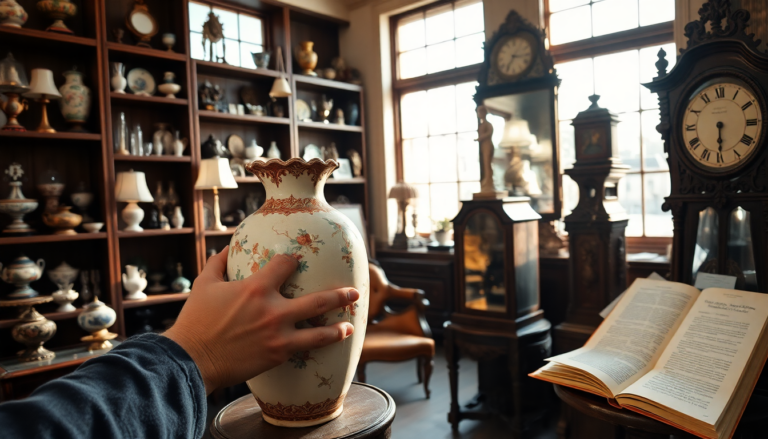Argomenti trattati
There’s something undeniably captivating about antiques, isn’t there? They add a unique flair to any space, offering a character that modern items often can’t match. But before you dive into the world of vintage treasures, it’s important to recognize that buying antiques comes with its own set of risks. Navigating these potential hazards is key to ensuring your home remains a safe haven while you enjoy the beauty of historical pieces. In this article, we’ll delve into essential considerations for purchasing antiques—from mold to lead exposure—and how to make sure your newfound treasures are safe for your living environment.
While the charm of antiques is hard to resist, they often come with hidden dangers, primarily due to their age and the conditions they’ve endured over the years. One of the most common culprits? Mold. This pesky fungus can thrive in damp environments, making older furniture particularly vulnerable if it’s been stored in less-than-ideal conditions. Experts warn that mold can lead to serious health issues, especially for those with respiratory problems. Lindsey Owen, an antiques preservation expert, shares, “Mold is the most common hazardous condition I encounter in my work. It’s essential to have any mold issues professionally mitigated before bringing antiques home.” This simple precaution not only safeguards your health but also helps ensure your new acquisition stands the test of time.
Another significant risk comes from pests. Imagine discovering that your beloved antique furniture has been infested with bed bugs or other insects. It could turn your dream find into a nightmare. Owen advises being vigilant when considering items that show signs of pest activity. “Pest treatment can be exceptionally challenging and sometimes may cause irreversible damage to the object,” she cautions. If you stumble upon an antique that captures your heart, don’t hesitate to consult a professional pest management service to ensure it’s treated safely and effectively.
Understanding Risks from Lead and Old Electrical Wiring
Lead exposure is another critical factor to keep in mind, especially when it comes to painted antiques. Even though lead was banned in U.S. paints in 1978, many older pieces may still contain traces of this hazardous material. The World Health Organization warns that lead exposure can harm various body systems, particularly affecting young children and pregnant women. So, antiques dealer Mahon suggests steering clear of items with chipping paint or surfaces that could be ingested. “It’s advisable to have a professional test painted surfaces, especially for dining tables or items used frequently.”
Additionally, the risks linked to old electrical wiring often fly under the radar. Many vintage lamps and electrical appliances may have wiring that has deteriorated over time, increasing the risk of electrical shocks or even fires. Mahon recommends taking any vintage electrical items to a qualified lighting expert who can update the wiring to ensure safety. “It is worth the peace of mind to have old wiring replaced and have an old lamp like new,” she asserts. Ensuring that your antiques meet modern safety standards is crucial for preventing potential hazards.
Smart Tips for Safe Antique Shopping
As you embark on your antique shopping adventure, adopting a proactive approach to safety is vital. Start by closely inspecting each piece for signs of damage or deterioration. Keep an eye out for visible mold, pest activity, and assess the condition of any electrical components. If you’re considering an item with painted surfaces, don’t hesitate to inquire about its history and whether it has been tested for lead. Plus, consulting experts or professionals who specialize in antique restoration and preservation can provide valuable insights into the safety of your potential purchases.
Ultimately, the joy of owning antiques lies in their ability to tell a story while enhancing the beauty of your home. However, it’s crucial to prioritize safety and health by being informed and cautious throughout your shopping experience. By following these guidelines and seeking professional advice when needed, you can confidently incorporate antique treasures into your living space—safeguarding yourself and your loved ones from any potential dangers along the way.

